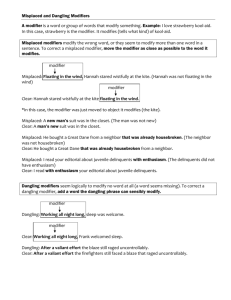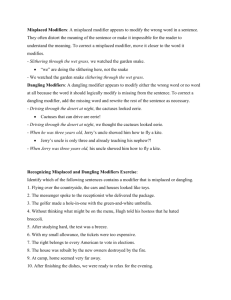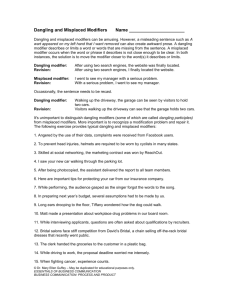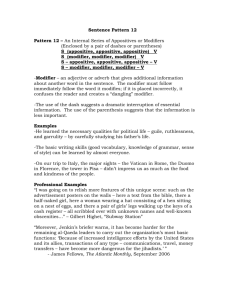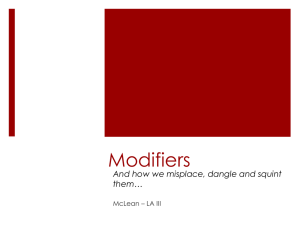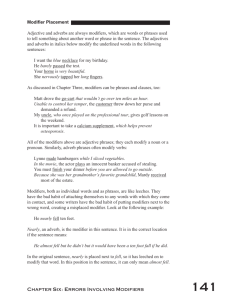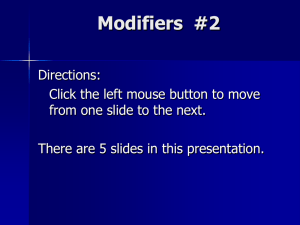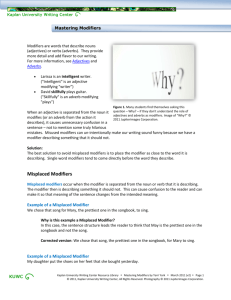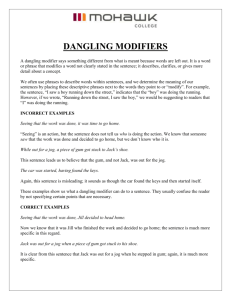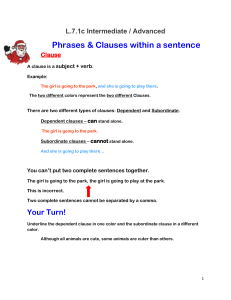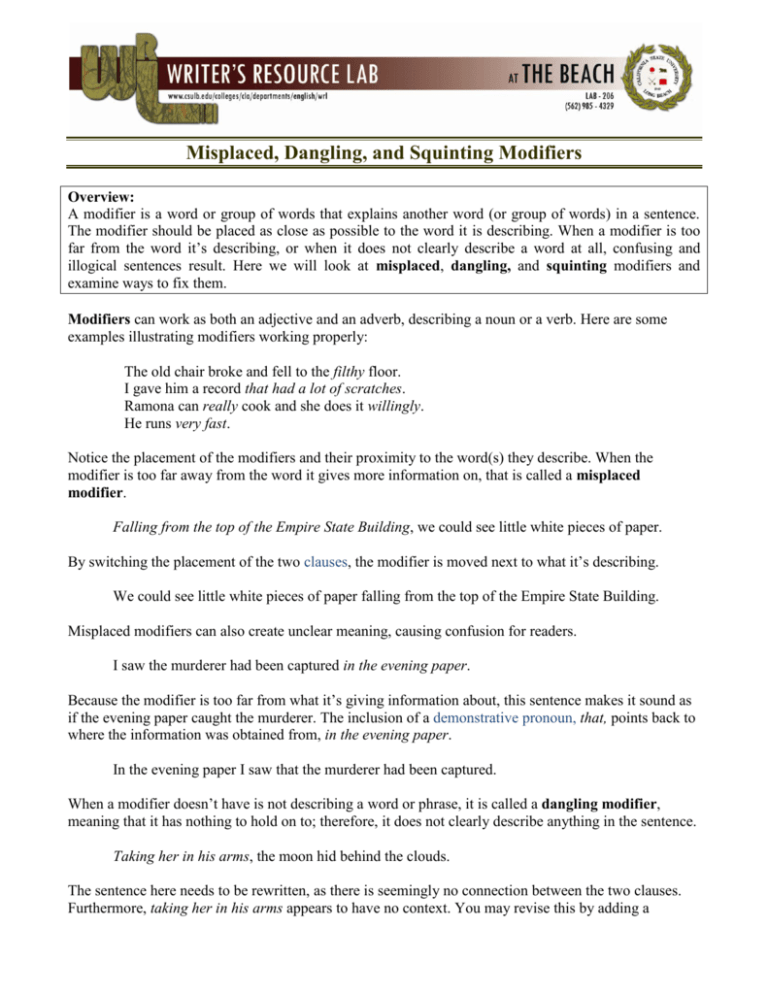
Misplaced, Dangling, and Squinting Modifiers
Overview:
A modifier is a word or group of words that explains another word (or group of words) in a sentence.
The modifier should be placed as close as possible to the word it is describing. When a modifier is too
far from the word it’s describing, or when it does not clearly describe a word at all, confusing and
illogical sentences result. Here we will look at misplaced, dangling, and squinting modifiers and
examine ways to fix them.
Modifiers can work as both an adjective and an adverb, describing a noun or a verb. Here are some
examples illustrating modifiers working properly:
The old chair broke and fell to the filthy floor.
I gave him a record that had a lot of scratches.
Ramona can really cook and she does it willingly.
He runs very fast.
Notice the placement of the modifiers and their proximity to the word(s) they describe. When the
modifier is too far away from the word it gives more information on, that is called a misplaced
modifier.
Falling from the top of the Empire State Building, we could see little white pieces of paper.
By switching the placement of the two clauses, the modifier is moved next to what it’s describing.
We could see little white pieces of paper falling from the top of the Empire State Building.
Misplaced modifiers can also create unclear meaning, causing confusion for readers.
I saw the murderer had been captured in the evening paper.
Because the modifier is too far from what it’s giving information about, this sentence makes it sound as
if the evening paper caught the murderer. The inclusion of a demonstrative pronoun, that, points back to
where the information was obtained from, in the evening paper.
In the evening paper I saw that the murderer had been captured.
When a modifier doesn’t have is not describing a word or phrase, it is called a dangling modifier,
meaning that it has nothing to hold on to; therefore, it does not clearly describe anything in the sentence.
Taking her in his arms, the moon hid behind the clouds.
The sentence here needs to be rewritten, as there is seemingly no connection between the two clauses.
Furthermore, taking her in his arms appears to have no context. You may revise this by adding a
dependent marker word at the beginning of the sentence and changing the verb tense from present
progressive to simple past.
As he took her in his arms, the moon hid behind the clouds.
Here is another example of a dangling modifier:
After playing Frisbee all evening, my English paper did not get finished.
Though it seems like these two clauses may fit, it is still unclear what playing Frisbee has to do with an
unfinished paper, or who is the subject of the sentence performing the action. In this case, the dependent
marker word after is the incorrect choice, and it should be replaced with a word that makes a clearer
connection between events and who, or what, is performing the actions in the two separate events.
Because I played Frisbee all evening, my English paper did not get finished.
Sometimes a modifier is placed between two clauses without clearly modifying either of them, which
can cause confusion. These are called squinting modifiers.
As the ship sank suddenly the life boats were lowered.
It is unclear whether the ship sank suddenly or the life boats were lowered suddenly. Having the
modifier clearly describe the intended word or phrase will clear up any confusion in this sentence.
Splitting this sentence up into two separate clauses with a comma can also work.
As the ship sank suddenly, the life boats were lowered.
Style Matters:
If you are having a difficult time catching modifier mistakes in your writing, try reading your work
aloud. Often hearing sentences in your own voice literally makes you hear them in a new way, and will
help you catch sentences that sound confusing. Also, try circling all of the adjectives and adverbs, and
then find the nouns and verbs these should be modifying. Are your modifiers clearing describing the
nouns and verbs you intended them to? If not, try correcting your error using the strategies suggested in
this handout.
Copyright (C) 2010. All rights reserved.
This handout is part of a library of instructional materials used in California State University, Long Beach’ s writing center, the Writer's Resource
Lab. Educators and students are welcome to distribute copies as long as they do so with attribution to all organizations and authors. Commercial
distribution is prohibited.


